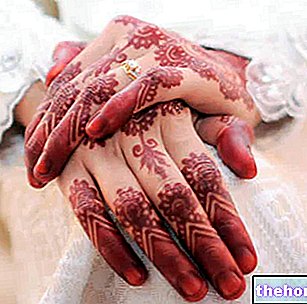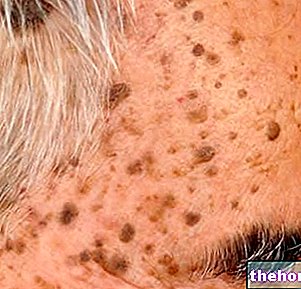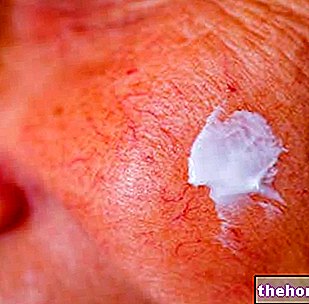What is Cocoa Butter?
Cocoa butter is a mixture of fatty substances obtained from the seeds (more correctly, from the beans) of Theobroma cacao, a very common sapling in South America and other tropical regions. The almond contained in its seeds has a high lipid content, which is around 50%.

Extraction
Stages of cocoa butter extraction
As mentioned, cocoa butter is obtained from the seeds - or rather, from the beans - of the homonymous plant. To obtain this product, first of all the beans must be extracted from the yellow pulp in which they are immersed inside the pods.
Once this preliminary operation has been carried out, it is possible to proceed with the actual processing that will lead to obtaining the cocoa butter:
- The beans are subjected to fermentation inside special tanks for a time between two and ten days. The fermentation thus performed allows to obtain the characteristic and well-known aroma of cocoa.
- At the end of fermentation, the beans are dried in the air or in the sun. However, this operation is not essential, therefore, it is an optional procedure.
- After fermentation and possible drying, the cocoa beans are squeezed in order to obtain the separation of the fat part.
- The fat part obtained from the squeezing of the beans is subjected to filtration and refining, thus obtaining cocoa butter.
What is left over from the cocoa beans after pressing, on the other hand, undergoes further processing that leads to the production of cocoa powder used in the food sector.
Composition
Cocoa butter is the fattest component of beans, particularly rich in fatty acids, such as:
- Palmitic acid (in concentrations of 24-31%);
- Stearic acid (in concentrations of 30-37%);
- Oleic acid (in concentrations of 33-39%);
- Linolenic acid in low concentrations (about 2%).
The particular composition of fatty acids gives this triglycerine fraction a series of interesting properties used both in the pharmaceutical and cosmetic fields.
Features
Cocoa butter takes on a solid consistency at room temperature, to melt as soon as the mercury rises above 32-35 degrees. It appears as a yellowish white mass, crumbly, slightly greasy to the touch and with the characteristic aroma of cocoa.
Unfortunately, these very characteristics, together with the difficulties of conservation and the high costs of producing it, has considerably reduced - but in any case not completely eliminated - the cosmetic and pharmaceutical use of cocoa butter.
Uses and Properties
Given its characteristics, cocoa butter is used in many fields, such as the culinary, pharmaceutical and cosmetic sectors.
Culinary uses
Cocoa butter is widely used in the "confectionery industry, where" it is used above all in the preparation of chocolate (content ≥ 18%), although a Community directive has established that this food may also contain other tropical fats, in any case not exceeding to 5%.
Pharmaceutical uses
Cocoa butter can be used as an excipient in the formulation of medicinal preparations. In this context, the best known use of this product is certainly that which is carried out in the preparation of suppositories, of which it is the main excipient. This use is due to its melting temperature (around 35 degrees) which allows the suppository to be kept intact at room temperature, while favoring its immediate dissolution as soon as it is inserted into the body, thus allowing the release of the active ingredients.
Use cosmetics
Thanks to its composition rich in fatty acids, cocoa butter has remarkable emollient, nourishing and protective properties for the skin and, for this reason, it is widely used in the cosmetic field.
In fact, cocoa butter is a traditional ingredient in lip sticks (often simply called "lip balms"), but also in creams, body butters, soaps and lipsticks.
Furthermore, cocoa butter exerts a "beneficial action also on hair and, in particular, on dry or damaged hair. Applied as a mask before normal shampoo, in fact, cocoa butter is able to exert a" protective action, making them softer and brighter at the same time.
In addition to the industrial sector, cocoa butter is also widely used in the production of do-it-yourself cosmetics, such as lip sticks and body butters.

Where to buy it
Cocoa butter for food use can be purchased at various patisseries, as well as it can be found in better-stocked supermarkets, but it is now also available in various online stores.
Cocoa butter for cosmetic use, on the other hand, is available in herbalists, parapharmacies and pharmacies (both physical and online), as well as it is available in various online stores.
In this regard, it is important to remember that cocoa butter for cosmetic use must NEVER be used in the food sector, since its use is indicated only and exclusively for external use.
Other Foods - Oils and Fats Peanut Butter Cocoa Butter Butter Greaves Wheat Germ Animal Fats Margarine Vegetable Cream Tropical Oils and Fats Frying Oils Vegetable Oils Peanut Oil Borage Oil Rapeseed Oil Krill Oil Poppy Seed Oil Seed Oil Pumpkin Avocado oil Hemp oil Safflower oil Coconut oil Cod liver oil Wheat germ oil Linseed oil Macadamia oil Corn oil Almond oil Hazelnut oil Walnut oil Olive oil Palm oil fish Rapeseed oil Rice oil Pomace oil Seed oil Soybean oil Grapeseed oil Extra virgin olive oil Sesame seeds and sesame oil Lard OTHER ARTICLES OILS AND FATS Categories Food Alcoholics Meat Cereals and derivatives Sweeteners Sweets Offal Fruit Dried fruit Milk and Derivatives Legumes Oils and Fats Fish and fishery products Salami Spices Vegetables Health recipes Appetizers Bread, Pizza and Brioche First courses Seconds pi acts Vegetables and Salads Sweets and Desserts Ice creams and sorbets Syrups, liqueurs and grappa Basic Preparations ---- In the Kitchen with leftovers Carnival recipes Christmas recipes Light diet recipes for Celiacs Recipes for Diabetics Recipes for Holidays Recipes for Valentine's Day Recipes for Vegetarians Protein Recipes Regional Recipes Vegan Recipes




























